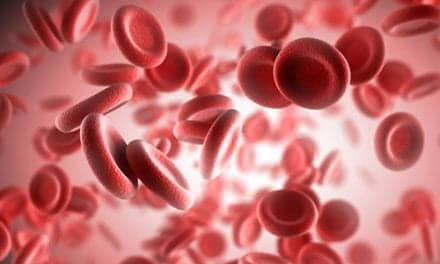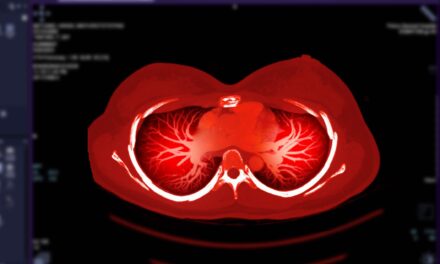Outomes in the population of premature infants with respiratory distress syndrome have significantly improved through the use of surfactant-replacement therapy
Each year, as many as 60,000 infants born in the United States may be affected by neonatal respiratory distress syndrome (RDS). Once considered to be idiopathic in nature, its underlying cause is now accepted as a “primary deficiency in alveolar surfactant due to a lack of functional type II pneumocytes in the premature lung.”1
Surfactant deficiency resulting in respiratory failure is a major cause of mortality and morbidity in premature infants of low birth weight.1 The recognition of this deficiency, and the resulting replacement of surfactant, can lead to a significant reduction in both morbidity and mortality associated with this clinical deficiency.
Endogenous surfactant, normally produced by type II alveolar epithelial cells within the lung, is primarily responsible for the prevention or reduction of alveolar collapse due to an increase in surface tension within the alveoli. Because the process of surfactant production takes place relatively late in fetal life (from 22 to 24 weeks’ gestation through about 32 weeks’ gestation), infants born prematurely are at increased risk of surfactant deficiency. This deficiency results in the development of RDS, also known as hyaline membrane disease.2
CLINICAL PRESENTATION OF RDS
On physical examination, infants born with RDS typically are found to have increased work of breathing secondary to decreased lung compliance. Nasal flaring, grunting, and substernal and suprasternal retractions are frequently observed in the infant with RDS. Also routinely observed are atelectasis, alveolar hyperinflation, pulmonary edema, hypoxemia, and hypercapnia. Analyses of arterial blood samples reveal respiratory acidosis; at times, metabolic acidosis is also present. Ventilation and perfusion in the lung are mismatched, resulting in intrapulmonary shunting. The negative effects associated with RDS are further complicated iatrogenically by the administration of high concentrations of oxygen, as well as by the hazards associated with mechanical ventilatory support. Complications associated with oxygen toxicity and positive-pressure ventilation contribute to such conditions as bronchopulmonary dysplasia, which, in turn, may result in pulmonary fibrosis, chronic respiratory failure, and cor pulmonale.3
PREPARATIONS
The exogenous surfactant preparations that are available for use at present are natural bovine lung extracts, surfactants obtained from the lavage of calf lungs, extracts of porcine lung surfactants, and synthetic preparations.4
The administration of exogenous surfactant is considered an appropriate prophylactic treatment for premature infants who are at the greatest risk of developing RDS: those of less than 32 weeks’ gestational age and/or of birth weights less than 1.25 kg. Early administration may help to minimize lung injury, which could otherwise be the result of ventilating surfactant-deficient lungs. The instillation of exogenous surfactant into lungs that are still absorbing fetal lung fluid may result in improved distribution.1 Surfactant administration may be indicated for infants of more than 32 weeks’ gestation in primary pulmonary hypertension and in meconium aspiration syndrome as a rescue therapy (as well as for prophylactic treatment of RDS).2
PROCEDURAL AND PHYSIOLOGIC CONCERNS
Several procedure-related complications have been cited in the literature; these include endotracheal tube occlusion by surfactant, bradycardia secondary to hypoxia, and hemoglobin desaturation resulting in an increased need for supplemental oxygen administration.5 Close monitoring by appropriately qualified personnel is necessary in order to minimize the impact of such complications.
Physiologic complications include apnea, the development of mucous plugging, and pulmonary hemorrhage. Frequently, an immediate improvement in lung compliance occurs, resulting in an increase of expiratory tidal volume, as well as an observation of increased chest expansion. Failure to make ventilator adjustments in response to improved lung compliance has resulted in barotrauma,5 as well as volutrauma.
INSTILLATION
The most common method used for the administration of exogenous surfactant is direct instillation into the endotracheal tube. This method results in a rapid spreading of the material, allowing it to be distributed to the lung periphery. Other methods of administration have been investigated including aerosolization of the surfactant, as well as instillation in conjunction with techniques such as jet ventilation and partial liquid ventilation.4
General information on the dosage used for various surfactant replacement products is shown in Table 1.
|
||||||||||||||||||
Clinical Trials
Investigations of various exogenous lung surfactant preparations that are presently available have demonstrated differences in the improvement of gas exchange and other pulmonary variables. However, they have failed to show a statistically significant reduction in mortality or increased survival without BPD (Table 2). There does appear to be some indication that the presently available “natural” surfactants may be more efficacious than synthetic preparations when administered to premature infants. It is also important to note that differences do exist among the natural surfactants, and, therefore, the individual characteristics of each must be considered.
BENEFITS
It has been demonstrated that replacement therapy for surfactant-deficient infants may result in an improved oxygen index, increased lung compliance, and reduced work of breathing.4,5 A reduction in ventilatory support requirements, including the ability to extubate the patient earlier, has been observed as a direct result of improved lung compliance. Another potential benefit of rescue replacement therapy that has been cited is the synthesis of endogenous surfactant. In a study performed by Bunt et al,6 it was found that multiple doses of exogenous surfactant for RDS are tolerated well by the developing lung and that they stimulate endogenous surfactant synthesis. These positive effects of therapy have resulted in a significant improvement in the morbidity and mortality associated with RDS.
Although the use of exogenous surfactant therapy in the adult has been undergoing clinical studies, results thus far have been inconclusive.7 This therapy may be most effective when combined with other forms of therapy (such as the use of lung-protective strategies with the provision of mechanical ventilatory support). The use of surfactant-replacement therapy in the adult respiratory distress syndrome (ARDS) requires continuing research to determine its efficacy.
CONCLUSION
The use of surfactant-replacement therapy has significantly improved outcomes in the population of premature infants with RDS. These positive results have led to increased interest in the potential benefits of surfactant-replacement therapy for adults with ARDS.
Paul Nuccio, RRT, is clinical educator for respiratory care, and Christine Pantano, RRT, is a staff therapist in the NICU, both at Brigham & Women’s Hospital, Boston.
REFERENCES
1. Notter RH. Lung Surfactants: Basic Science and Clinical Applications. New York: Marcel Dekker; 2000.
2. Committee on Fetus and Newborn, American Academy of Pediatrics. Surfactant replacement therapy for respiratory distress syndrome (RE9829). Pediatrics. 1999;103:684-685.
3. Farzan S. A Concise Handbook of Respiratory Diseases. 3rd ed. Norwalk, Conn: Appleton & Lange; 1992.
4. West JB. Respiratory Physiology—The Essentials. 6th ed. Baltimore: Lippincott Williams & Wilkins; 2000.
5. AARC Clinical Practice Guidelines. Surfactant replacement therapy. Respiratory Care. 1994:39:824-829.
6. Bunt JE, Carnielli VP, Janssen DJ, et al. Treatment with exogenous surfactant stimulates endogenous surfactant synthesis in premature infants with respiratory distress syndrome. Crit Care Med. 2000;28:3383-3388.
7. Gregory TJ, Steinberg KP, Spragg R, et al. Bovine surfactant therapy for patients with acute respiratory distress syndrome. Am J Respir Crit Care Med. 1997;155:109-131.











